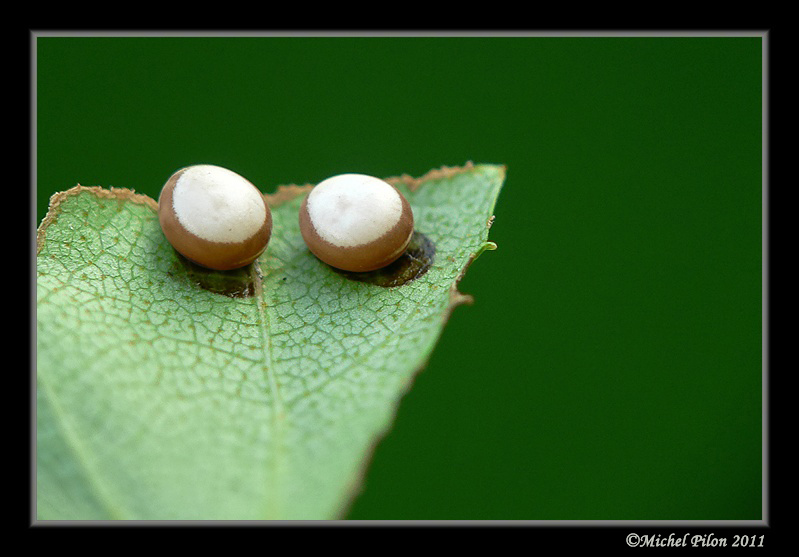|
|
Post by pilonm on Nov 13, 2011 6:43:25 GMT -8
Hello all, Here are 2 structures I found in June 2010 in my Malus (location Quebec, Canada, near Vermont). Are they eggs??? I kept them one full month but nothing happened... Thanks for helping me  Michel  |
|
|
|
Post by bluemoth on Nov 13, 2011 11:57:04 GMT -8
They look like silk moth eggs. You can even see the brown glue stain made by the female moth on the leaf under each egg. Not shure of species.
|
|
|
|
Post by oehlkew on Nov 13, 2011 14:05:39 GMT -8
They look like Antheraea polyphemus eggs, a surprise on Malus.
If you kept the eggs on the foliage and stored them in airtight containers, that may have been why the eggs did not emerge.
Bill Oehlke
|
|
|
|
Post by bichos on Nov 14, 2011 2:09:02 GMT -8
Nice picture!
could the eggs be dormant/over-wintering???
|
|
|
|
Post by bluemoth on Nov 14, 2011 13:54:37 GMT -8
These eggs are not from a species that over winters as eggs. Sadly I agree with Bill, the eggs are dead. Hemileuca eggs do over winter.-----Put up a black light in spring next year to see if you can attract a female silk moth with eggs. She will lay eggs quite willingly in captivity in small cage or paper bage. Then you can rear the larva.
|
|
|
|
Post by ladobe on Nov 14, 2011 13:58:58 GMT -8
I agree, Antheraea polyphemus eggs. This species is recorded using Malus pumila (Common Apple), so your find can be documented to Malus.
As Bill suggested, lots of things can prevent eggs from hatching.
This species is probably only single brooded in Quebec, and May/June would be about the right time to find eggs. Further south they can have more than one brood. The last (or only) brood of the season overwinters as a cocoon (ovum do not).
HTH
|
|
|
|
Post by pilonm on Nov 20, 2011 6:05:56 GMT -8
Hello all,
Thank you very much for your great help about that picture! I'm not surprised because we sometimes receive the visit of Antheraea polyphemus here...
I read also that this moth can lay non fertile eggs...
Bye,
Michel
|
|